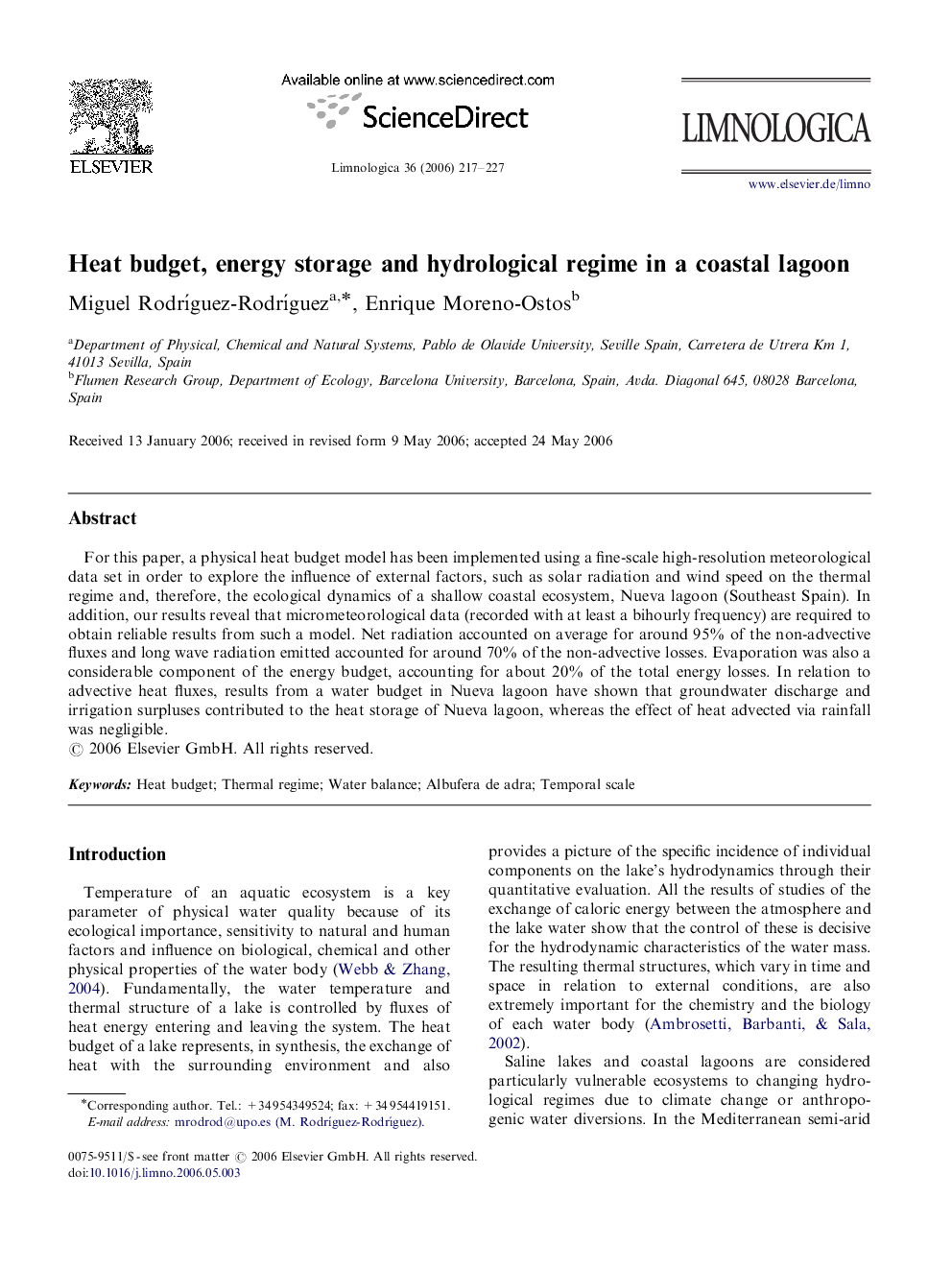| Article ID | Journal | Published Year | Pages | File Type |
|---|---|---|---|---|
| 4400770 | Limnologica - Ecology and Management of Inland Waters | 2006 | 11 Pages |
For this paper, a physical heat budget model has been implemented using a fine-scale high-resolution meteorological data set in order to explore the influence of external factors, such as solar radiation and wind speed on the thermal regime and, therefore, the ecological dynamics of a shallow coastal ecosystem, Nueva lagoon (Southeast Spain). In addition, our results reveal that micrometeorological data (recorded with at least a bihourly frequency) are required to obtain reliable results from such a model. Net radiation accounted on average for around 95% of the non-advective fluxes and long wave radiation emitted accounted for around 70% of the non-advective losses. Evaporation was also a considerable component of the energy budget, accounting for about 20% of the total energy losses. In relation to advective heat fluxes, results from a water budget in Nueva lagoon have shown that groundwater discharge and irrigation surpluses contributed to the heat storage of Nueva lagoon, whereas the effect of heat advected via rainfall was negligible.
